As an Earth Science teacher I was very excited when I learned that we would get a chance to explore a scientific research tunnel under the frozen landscape. The tunnel gives scientists the opportunity to study permafrost. In most parts of the Northern US, the winter cold will freeze the soil down a few inches to a few feet and the warmth of summer will melt the soil each year. But, in polar environments, only the surface of the soil will thaw and the deep soil remains frozen. This means that layers of sediments, soil, organic matter and fossils that were deposited in the distant past are preserved in a permanent "deep freeze”. This is an outstanding environment for the preservation of Ice Age fossils that are tens of thousands of years old. As rivers or miners cut into the permafrost soil, the fossils can be recovered.
When we entered the permafrost tunnel it had the rich, musty, organic smell of compost, and we were able to see bones sticking out of the walls. Even more amazing were entire tundra pond ecological communities frozen and buried for over 40,000 years. The plants looked as fresh as if they had been alive last summer and some of the plants still showed their original green color even though we were deep under ground.
Mr. Peneston inside the permafrost research tunnel
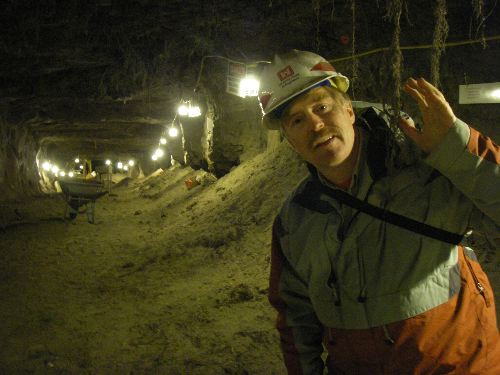 Mr. Peneston inside the permafrost research tunnel
Mr. Peneston inside the permafrost research tunnel
Notice the plant roots hanging from the ceiling of the permafrost tunnel. They are plants that grew over 20,000 years ago in tundra pools. Now they are buried and frozen.
A 20,000 year old fossil jawbone frozen in permafrost
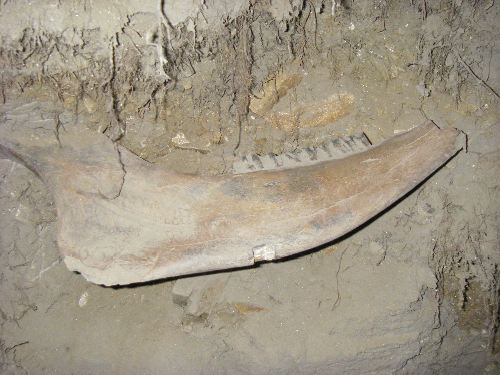 A 20,000 year old fossil jawbone frozen in permafrost
A 20,000 year old fossil jawbone frozen in permafrost
This jawbone is over one foot long and the teeth remind me of the ones I have seen in much smaller white tailed deer back home. I wonder what kind of animal it was? Notice the small notch in the bottom of the jaw where scientists have removed some of the bone so that the age of the fossil could be determined.
Mr. Peneston touches a small pond that was frozen over 40,000 years ago!
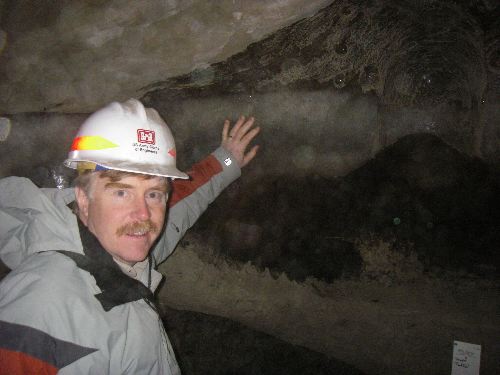 Mr. Peneston touches a small pond that was frozen over 40,000 years ago!
Mr. Peneston touches a small pond that was frozen over 40,000 years ago!
Deep inside the permafrost research tunnel in Fairbanks is a small pond of water that was on the surface 40,000 years ago. It has been frozen and then buried in permafrost ever since. Scientists have taken samples of the ice and melted them. They found living aquatic microorganisms!
As if the fossils underground were not enough of a surprise to us, I was even more surprised to find fossil wooly mammoth tusks and walrus ivory for sale in the gift shops of Fairbanks!
Fossil wooly mammoth ivory for sale?!?
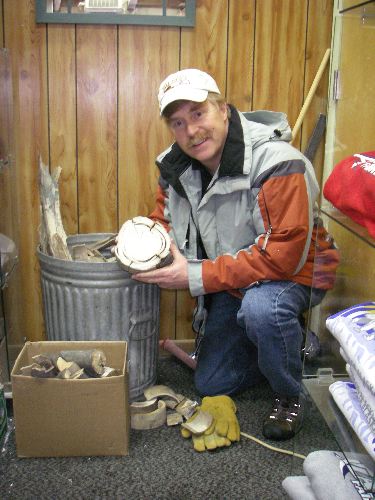 Fossil wooly mammoth ivory for sale?!?
Fossil wooly mammoth ivory for sale?!?
Jeff Peneston holds a cross-section of a fossil mammoth tusk that is for sale in a craft shop in Fairbanks. The fossil tusks are found weathering out of the Alaskan permafrost and are sold to local native ivory carvers. The fossil ivory in this "trash” can are the lower quality scraps. They were on sale for $35 per pound.
A fossil skull
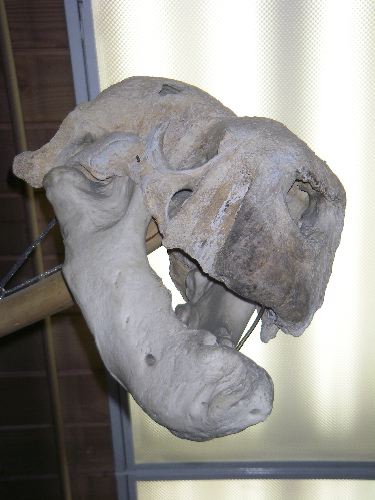 A fossil walrus skull
A fossil walrus skull
This skull was on display in a gift shop in Fairbanks.
Fun with dead stuff Question #1 Look closely at the skull. Can you guess what kind of animal it is from. As a hint, I will point out that the teeth are missing from the skull. Go to the forum section and send me your guess about the name of this type of animal.

